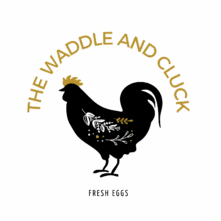Native Prairie Plants
Bee Balm
We have two kinds of bee balm. The pink one is called bee balm or Oswego tea; the other one is purple bee balm or wild bergamot. They belong to the mint family. The long-blooming, fragrant flowers are especially inviting to bees, hence the name. Flowers bloom from summer to fall. The plants have a long history of use as medicinal plants by Native Americans. They were used to treat colds, coughs, fevers, stomach aches, heart trouble and breathing difficulties. The crushed leaves produce a spicy, fragrant essential oil.


Black-Eyed Susan
Next is black-eyed Susan, although ours tend to be more brown-eyed than black-eyed. The dark brown/black center “eye” is surrounded by bright yellow petals. A tea is made from the leaves and is used in folk medicine as a diuretic. A yellow dye is made from it. We see them from late spring into summer.

Coreopsis
Two kinds of coreopsis grow in our meadows, large-flowered coreopsis and golden coreopsis. Large-flowered coreopsis has yellow petals and a yellow center. Golden coreopsis is flashier. Its bright yellow petals surround a deep red center. Large-flowered coreopsis blooms from late spring into summer, golden coreopsis is midsummer. Native Americans used coreopsis for a variety of treatments. A tea is made from the leaves and used in folk medicine. The plant makes a yellow dye.


Purple prairie clover
We have eight kinds of clover in our meadows, but purple prairie clover is the showiest. Clovers belong to the bean family. Most clovers are low growing; however, the stems of purple prairie clover are typically about 2 feet long. Flowers form at the top of the stems. The clover blooms during summer and is found throughout the tallgrass prairie region. The plant is high in protein and is nutritious for livestock, although overgrazing will reduce its numbers. Native Americans made a tea from the plant.

Wild Petunia
Wild petunia, also called prairie petunia, is a low-growing plant found in dry prairies. It grows to a foot in height and favors sandy locations. The flowers are blue, tubular and five-lobed. They are 1-2 inches across. It belongs to the acanthus family, native to tropical and warm temperate regions. The greatest diversity is seen in the Mediterranean and in Asia. The flowers are a favorite of bees, butterflies and hummingbirds. Flowers open at night and usually last a day. We see them from late spring into mid-summer.


Rattlesnake Master
Rattlesnake master is a perennial herb in the parsley family. It is native to the tallgrass prairie. The name comes from a misbelief by early pioneers that the roots could be used to treat rattlesnake bite. The notion came because Native Americans would chew the root and blow it on their hands before handling rattlesnakes. The plant can grow to nearly 6 feet tall, but the ones we see are half that tall. Rattlesnake master grows in full sun and has dense white, ball-shaped flowerheads made up of dozens of tiny white flowers. The flowers attract many insects, including bees, flies, beetles, butterflies and wasps. The plant seems to be a medicinal cure-all and is used for pain relief, bladder problems, chest pain, dysentery and venereal disease.










